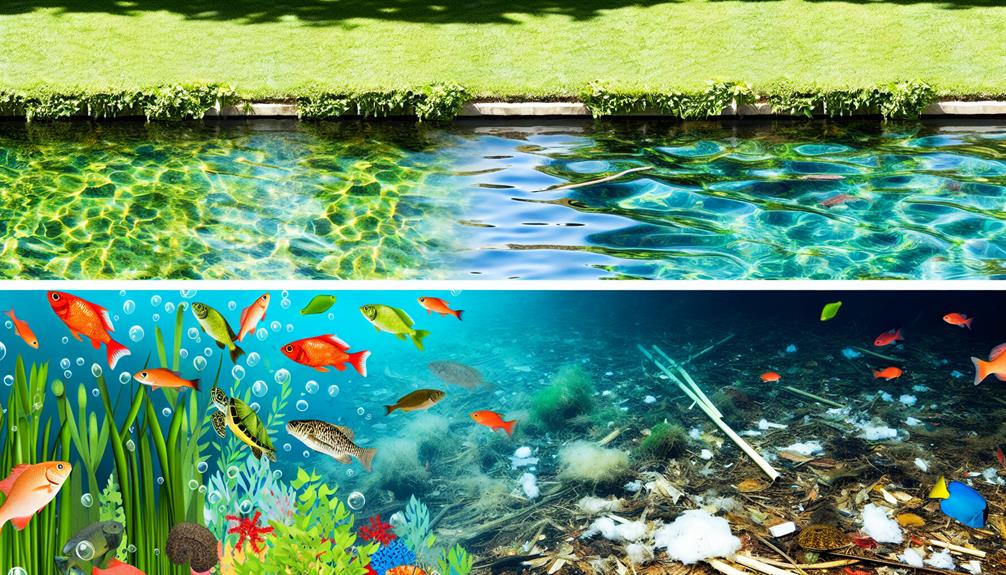Let's dive into the fascinating world of Houston's aquatic biodiversity and how water quality initiatives are making a difference.
It's all about finding that delicate balance between nature and human impact. By looking at the ways we're protecting our water sources and improving habitats for aquatic life, we can see how science, technology, and community efforts come together to create a sustainable future.
Exploring the connection between water quality and biodiversity in Houston opens up a world of innovative solutions and the potential for lasting positive changes. It's truly inspiring to witness the collaborative efforts shaping a better environment for all.
Water Quality Initiatives Overview
Port Houston is really stepping up its game when it comes to taking care of our water quality. They're all about protecting aquatic life and habitats through some really cool projects and partnerships. One big thing they're doing is managing stormwater to keep our coastal areas clean and safe. They've set up smart systems to catch and treat runoff before it can mess up our waterways, which helps keep harmful stuff out of the ecosystem.
But that's not all – they're also working on restoring marshes along the coast. These projects are super important because marshlands are like luxury condos for all kinds of aquatic critters. By reviving and safeguarding these areas, Port Houston is making sure our underwater buddies have a cozy home to thrive in.
It's awesome to see Port Houston so dedicated to being good stewards of the environment and preserving aquatic life. Teaming up with different groups lets them tap into all sorts of knowledge and tools to promote responsible practices and keep things sustainable. With these efforts, Port Houston is really making a positive impact on the health and strength of our local aquatic ecosystems.
Stakeholder Involvement and Collaboration
In Houston, coming together with groups like the San Jacinto River Authority, Houston-Galveston Area Council, and Texas State Soil and Water Conservation Board is key to boosting environmental care and sustainable actions for water quality. These stakeholders actively work on reducing harmful substances in water bodies, making recreational spots safer, and promoting eco-friendly practices. Collaborations with the Texas Commission on Environmental Quality and local flood control districts further amplify the impact of these efforts. By involving the community in open discussions and public engagements, awareness and participation in projects like Total Maximum Daily Loads (TMDL) grow, fostering a shared commitment to enhancing water quality.
The involvement of stakeholders isn't just about cleaning up Houston's waterways—it's about securing the lasting success of water quality projects. Through joint efforts, these partners significantly contribute to safeguarding the diverse aquatic life in Houston.
Total Maximum Daily Loads Implementation
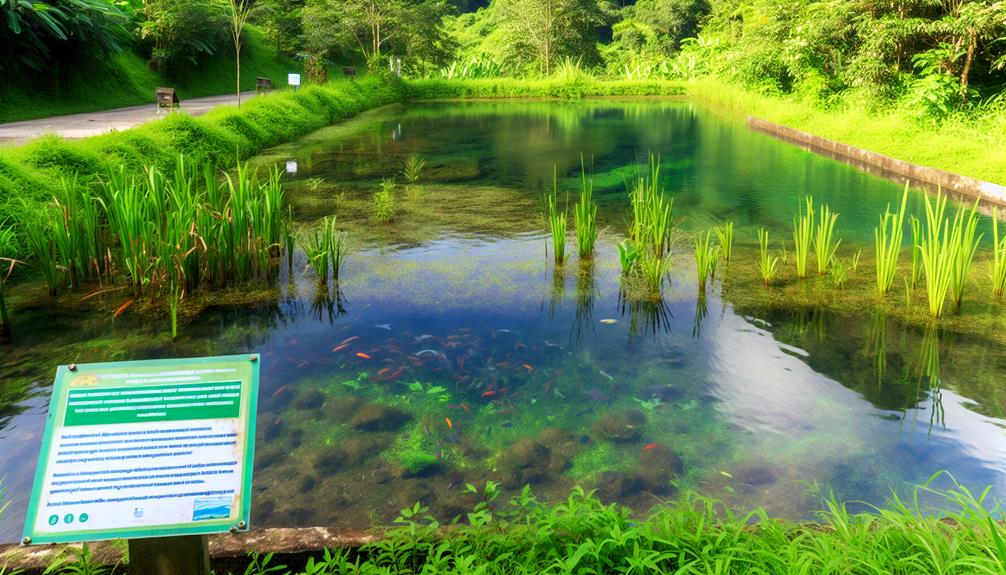
Implementing Total Maximum Daily Loads (TMDLs) in Houston is all about making our waterways safer for everyone to enjoy outdoor activities without worry.
TMDLs are like our water quality goals, specifically targeting to lower bacteria levels so that the water meets all the necessary standards set by regulators.
To make this happen, we keep a close eye on bacteria levels, pinpoint where pollution is coming from, and put in place measures to control it, all aimed at hitting those TMDL targets.
Working together is key in this mission. Groups like the San Jacinto River Authority and Houston-Galveston Area Council team up to ensure the successful implementation of TMDLs.
Expanding the scope of TMDLs to cover more parts of waterways in counties like Brazoria, Harris, and Fort Bend shows a real dedication to improving water quality across the region.
Addressing Elevated Bacteria Concentrations
Imagine enjoying a day out by the water in Houston-Galveston, engaging in your favorite recreational activities. To ensure your safety and well-being, a special initiative has been launched to tackle high bacteria levels in 72 waterway segments in the area. These elevated bacteria concentrations can pose health risks, especially for those who love water activities. By taking steps to reduce these levels, the overall water quality in these spots can be enhanced, making them safer for everyone to enjoy.
The recently approved plan lays out effective strategies to address the issue of high bacteria levels. Key players like the San Jacinto River Authority and the Harris County Flood Control District are driving forces behind this important project. Through public meetings, the community gets a chance to voice their opinions, creating a united front in addressing concerns about water quality.
Lowering bacteria levels in the watershed counties isn't just about protecting people's health; it's also crucial for preserving the delicate balance of aquatic ecosystems. With targeted actions and continuous monitoring, the aim is to create a healthier environment for both residents and wildlife, promoting sustainable water quality practices in the region.
Promoting Aquatic Biodiversity Through TMDLs
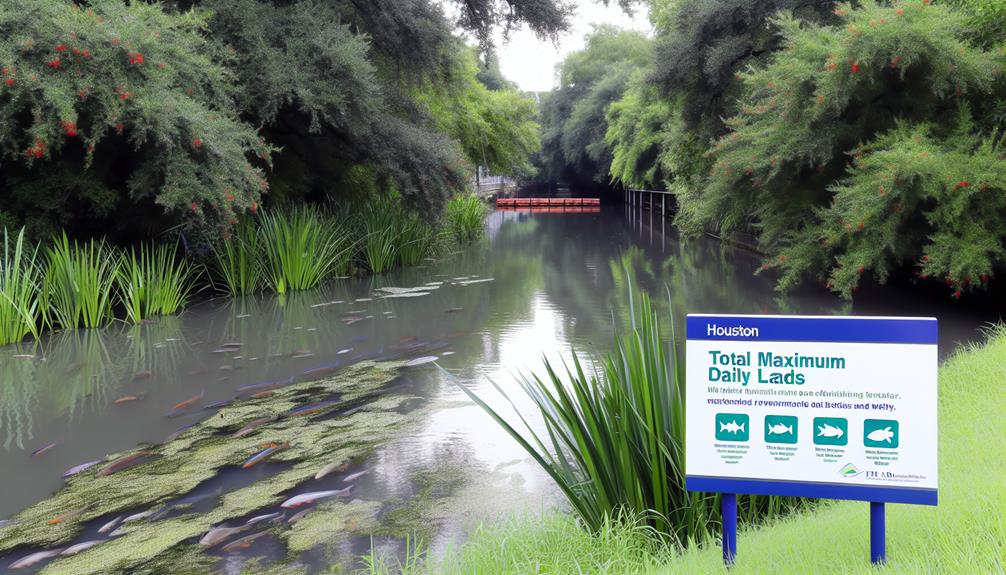
TMDLs play a crucial role in safeguarding aquatic biodiversity by controlling pollutant levels in different waterway sections.
By monitoring water quality with TMDL measures, we can gauge how biodiversity is affected, which in turn helps protect aquatic environments.
Understanding how TMDLs impact aquatic biodiversity is key to preserving a thriving ecosystem in the waterways around Houston-Galveston.
TMDLS and Aquatic Habitats
When it comes to boosting aquatic biodiversity in the Houston-Galveston area, a team effort is underway to establish and put into action Total Maximum Daily Loads (TMDLs) for specific waterway sections.
TMDLs play a crucial role in cutting down bacteria levels in 60 waterway segments, which is vital for enhancing aquatic habitats. The focus of the TMDL Implementation Plan is on safeguarding recreational activities by tackling high bacteria levels in Brazoria, Harris, and Fort Bend counties.
The collaboration between stakeholders such as the San Jacinto River Authority and Texas State Soil and Water Conservation Board is essential for effectively implementing TMDLs to enhance aquatic biodiversity.
Engaging with the community through open meetings, involving organizations like the Bayou Preservation Association, is a significant part of the effort to promote aquatic biodiversity through TMDL projects. This hands-on approach ensures that everyone is involved and invested in the health of our waterways.
Monitoring Water Quality
Keeping a close eye on water quality in the Houston-Galveston area is crucial for preserving aquatic life through targeted TMDL efforts.
The focus on surface water quality, especially in pristine rivers, is key to cutting down on pollutants and boosting overall ecosystem well-being.
The Total Maximum Daily Loads (TMDLs) program is instrumental in tackling high bacteria levels in water bodies. Currently, there are 72 TMDLs designated for 60 river sections, with plans to extend these initiatives to other counties like Brazoria, Harris, and Fort Bend.
Key players such as the San Jacinto River Authority and Houston-Galveston Area Council are actively engaging the community through open forums and partnerships with organizations like the Bayou Preservation Association and Galveston Bay Foundation.
Impact on Biodiversity
If you're looking to boost aquatic life in the Houston-Galveston region, there's a targeted push to cut bacteria levels in key waterways through the Total Maximum Daily Loads (TMDLs) initiative.
- The focus is on slashing bacteria levels in 60 waterway sections to support diverse aquatic life.
- The Implementation Plan (I-Plan) greenlit by the Texas Commission on Environmental Quality (TCEQ) tackles high bacteria levels head-on.
- Key players like the San Jacinto River Authority and Houston-Galveston Area Council are actively working to lower bacteria levels for safer water recreation.
- Engaging the community through gatherings like the Bacteria Implementation Group (BIG) meetings encourages public participation and collaboration with groups like the Bayou Preservation Association, aiding in water quality enhancement and the protection of aquatic ecosystems.
San Jacinto River Authority Partnership

Our close collaboration with the San Jacinto River Authority plays a crucial role in assessing the impact of water quality projects in the Houston area. By working together, the Authority and local community members can thoroughly investigate the sources of high bacteria levels in our waterways.
This focused approach is aimed at effectively reducing bacteria levels, making recreational activities in specific water areas safer for residents across different counties. It's all about teaming up to ensure cleaner and healthier water for everyone to enjoy!
River Authority Collaboration
Working closely with a range of partners, the San Jacinto River Authority is actively improving water quality in Houston's waterways with Total Maximum Daily Loads (TMDLs). This joint effort aims to lower bacteria levels in 60 different water sections to safeguard recreational activities from high bacteria levels.
Counties like Brazoria, Harris, and Fort Bend are all part of this collaboration, ensuring a comprehensive approach to boosting water quality. Key stakeholders, including the Houston-Galveston Area Council and Texas State Soil and Water Conservation Board, are deeply involved in driving this important project forward.
To keep the community informed and engaged, open BIG meetings are held regularly, with meeting records easily accessible to the public.
Environmental Impact Assessment
Teaming up with the San Jacinto River Authority, we're diving into an Environmental Impact Assessment that's all about tackling those pesky high bacteria levels in Houston-Galveston waterways. With a focus on 72 Total Maximum Daily Loads (TMDLs) for 60 different waterway sections, our aim is to zap those bacteria hotspots.
Engaging closely with key players like the Houston-Galveston Area Council, Texas Commission on Environmental Quality, and local county authorities, we're all hands on deck for this mission. We're also inviting the community to join in through open meetings, with shoutouts to groups like the Bayou Preservation Association.
Our main mission here is to make sure folks can enjoy water activities safely by rolling out plans to slash bacteria levels in water bodies spread across various watershed counties. The insights we gather will be crucial in crafting solid strategies to safeguard the local marine ecosystem and coastal habitats.
Community Engagement in Water Quality
Getting involved in water quality projects in Houston means teaming up with key organizations and stakeholders who are dedicated to conserving the city's aquatic biodiversity.
- Bayou Preservation Association and Galveston Bay Foundation: These groups are at the forefront of educating and engaging the community in water quality initiatives.
- San Jacinto River Authority and Harris County Flood Control District: These organizations actively contribute to improving water quality in Houston's water bodies.
- Houston-Galveston Area Council: Acting as a central hub, this council brings together various community endeavors to tackle water quality challenges in the area.
- Public Participation in TMDL Projects: Encouraging public involvement through transparent meetings and accessible information is crucial for the success of Total Maximum Daily Load projects.
By uniting these organizations, stakeholders, and community members, Houston is making significant progress in enhancing water quality and safeguarding its aquatic biodiversity.
Through fostering community engagement and involvement in water quality projects, the city is moving towards a more sustainable and thriving aquatic ecosystem.
Protecting Aquatic Ecosystems in Watershed
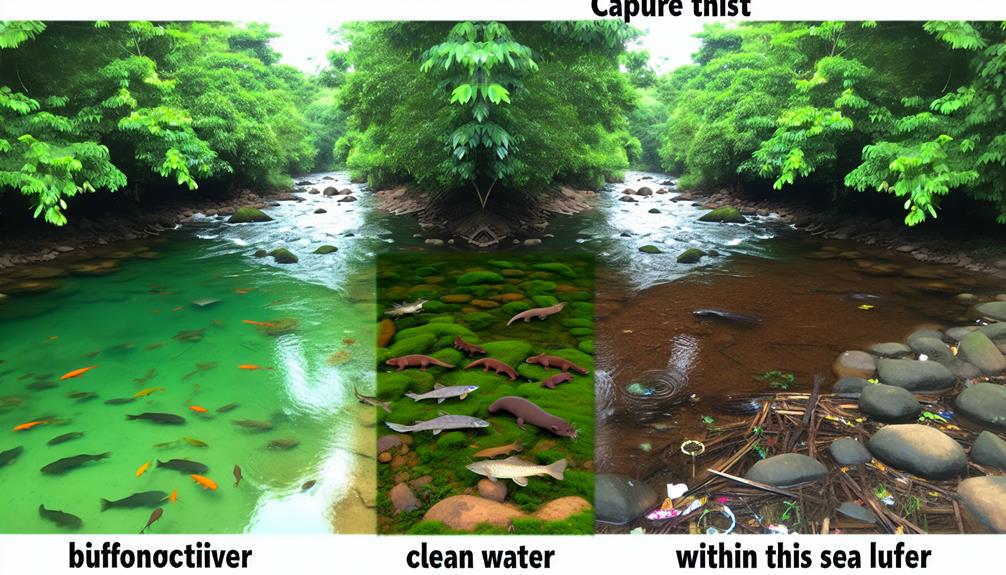
Protecting the aquatic ecosystems in the watershed is a team effort that requires involvement from various stakeholders and the community. Counties like Brazoria, Harris, and Fort Bend are making it a priority to safeguard these vital ecosystems. An Implementation Plan has been given the green light to tackle the issue of high levels of bacteria in the Houston-Galveston waterways. Key players such as the San Jacinto River Authority and Houston-Galveston Area Council are actively engaged in improving water quality.
Community participation is encouraged through open meetings organized by the Bacteria Implementation Group (BIG) and participation in Total Maximum Daily Load (TMDL) projects. Organizations like the Bayou Preservation Association and Galveston Bay Foundation are also working collaboratively to boost aquatic biodiversity in the watershed. By taking steps to reduce bacterial pollution, monitor water quality, and involve the community in conservation efforts, these initiatives are crucial for maintaining the delicate balance of aquatic ecosystems in the area.
Enhancing Wildlife Habitats in Watershed
Enhancing wildlife habitats in the watershed is like giving nature a helping hand to flourish and thrive. When we take the time to improve these habitats, amazing things happen for the ecosystem:
- More Species, More Fun: Sprucing up wildlife habitats creates a welcoming space for all kinds of critters, which boosts the biodiversity in the watershed. It's like hosting a grand party for nature!
- Keeping the Balance: Healthy habitats help keep the ecosystem in check by ensuring a well-balanced food chain and supporting natural processes. It's like having a perfectly orchestrated symphony in the wild.
- Cleaner Waters, Happier Critters: Well-kept habitats act like filters, cleaning out pollutants and muck from the water. This means better water quality for everyone living in the watershed.
- Helping Our Furry Friends: Restoring habitats can be a lifeline for wildlife populations that have faced tough times due to pollution or habitat destruction. It's our way of lending a helping hand to our furry and feathered friends.
Creating Safer Environment for Recreation
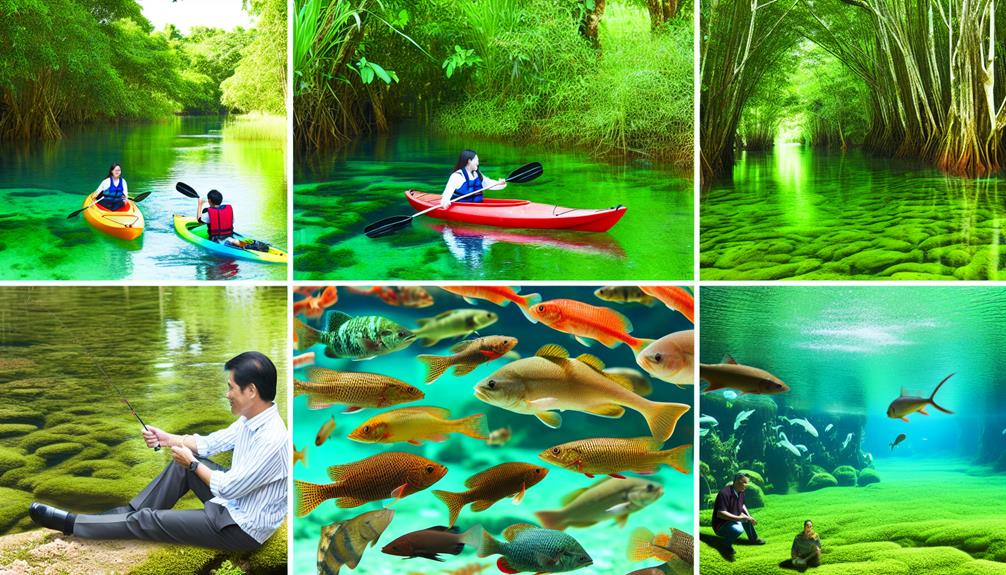
Have you ever noticed those clean swimming spots popping up in 72 different waterway sections around Houston-Galveston?
They're the result of something called Total Maximum Daily Loads (TMDLs), which are basically guidelines to keep the water quality top-notch for all your recreational water activities.
It's all about making sure you have a safe and enjoyable time in the water. Plus, getting everyone involved and engaged in the process is key to maintaining those high standards for safe swimming areas.
Safe Swimming Areas
Improving water quality in Houston's waterways is crucial for creating safer swimming spots for everyone to enjoy. Here's what you can do to help:
- Make sure Total Maximum Daily Loads (TMDLs) are in place to tackle high levels of bacteria.
- Get the San Jacinto River Authority and Texas Commission on Environmental Quality on board.
- Engage with the community by organizing open meetings and getting involved in local initiatives.
- Partner up with organizations like the Bayou Preservation Association and Galveston Bay Foundation to make a bigger impact.
Monitoring Water Quality
Ensuring clean water for recreational activities in Houston is crucial for a safe and enjoyable aquatic environment. The Texas Commission on Environmental Quality (TCEQ) keeps a close eye on water quality by monitoring more than 2,666 stations, checking for physical, chemical, and biological characteristics in surface water. In 2022, there are 32 monitoring stations providing real-time assessments. Back in 2020, they thoroughly examined 22,737 miles of streams and various water bodies to maintain quality standards. Collaborating with organizations helps streamline data collection and resource management for monitoring across the state. The Clean Rivers Program, where partners contribute over 65% of the data, plays a significant role in enhancing surface water quality in Texas.
| Monitoring Initiatives | Locations Monitored | Data Collection Method |
|---|---|---|
| TCEQ Stations | 2,666 | Physical, Chemical, Biological |
| Continuous Monitoring | 32 | Real-time Assessments |
| Clean Rivers Program | Statewide | Collaboration with Partners |
Bacteria Reduction for Healthier Waterways
Houston is making big strides towards cleaner waterways with a solid plan in place to tackle high bacteria levels in the Houston-Galveston water systems. This move is crucial for enhancing water quality and ensuring safe recreational opportunities in the area.
To lower bacteria concentrations effectively, several important steps have been taken:
- Implementing TMDLs: A focused effort on 60 different waterway sections spanning various watershed counties to bring down bacteria levels and meet water quality benchmarks.
- Engaging Stakeholders: Getting key players like the San Jacinto River Authority and Texas Commission on Environmental Quality actively involved in reducing bacteria for safer recreation.
- Involving the Community: Encouraging community participation through open public meetings and involving people in Total Maximum Daily Load (TMDL) projects to spread awareness and gather support.
- Organizational Support: Collaborative work from organizations like the Bayou Preservation Association and Galveston Bay Foundation is playing a significant role in decreasing bacteria levels in waterways, contributing to the overall enhancement of aquatic life in Houston.
Benefits of Water Quality Initiatives
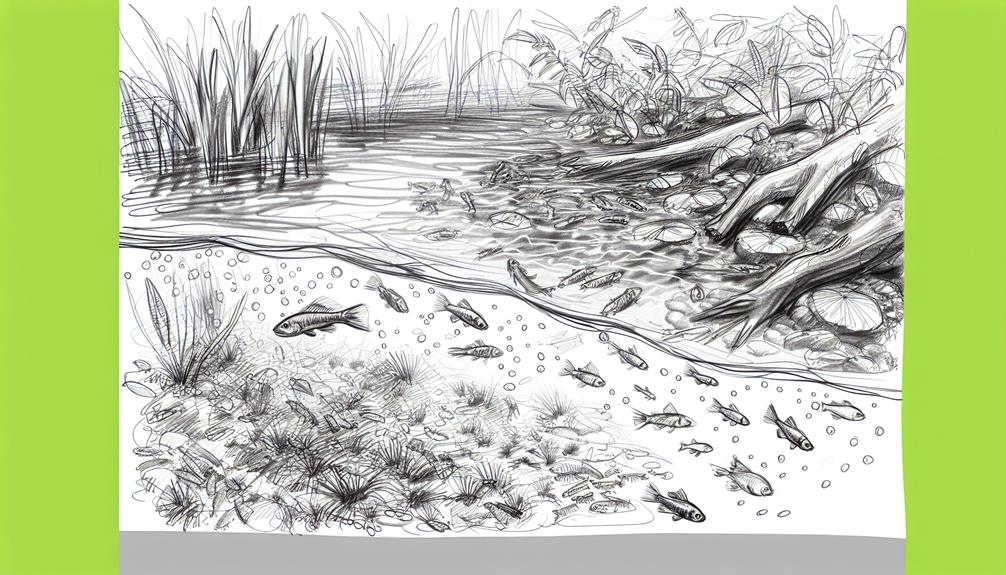
Improving water quality in Houston is crucial for the health and variety of aquatic life in the city. Initiatives that target reducing pollutants and enhancing habitats directly support aquatic biodiversity. These actions are key in maintaining thriving ecosystems, creating a suitable home for a diverse array of wildlife along Houston's waterways. Better water quality also encourages the growth of various aquatic plants, fish, and other essential organisms that keep the ecosystem balanced and resilient.
Additionally, by lowering bacteria levels through water quality projects, we're making recreational activities like swimming and fishing safer for both wildlife and people. Consistent monitoring and execution of these initiatives are vital for the overall health and longevity of Houston's aquatic environment. By championing aquatic biodiversity and upholding high water quality standards, these efforts significantly aid in preserving and enriching Houston's natural aquatic resources.
Frequently Asked Questions
How Does Biodiversity Improve Water Quality?
Biodiversity plays a crucial role in keeping our water clean and healthy. When we have a variety of species in an ecosystem, they work together to filter water, reduce pollution, and improve water clarity. This natural balance not only helps in maintaining a healthy environment but also cuts down on the need for expensive interventions to purify water artificially. It's like having a team of experts working round the clock to ensure our water stays pure and clear.
Does Houston Have Water Quality Issues?
Absolutely, Houston deals with water quality issues stemming from high levels of bacteria in its water bodies. The Texas Commission on Environmental Quality (TCEQ) has put forth Total Maximum Daily Loads (TMDLs) and an Implementation Plan (I-Plan) to tackle this problem head-on. Key players like the San Jacinto River Authority and Harris County Flood Control District are actively involved in efforts to reduce bacteria levels, ultimately improving water quality in the region.
What Are Possible Solutions to Remedy or Improve the Water Quality of the Stream?
Improving water quality is key to protecting our environment and health. One way to do this is by setting Total Maximum Daily Loads (TMDLs) and involving the community in the process. By monitoring and reducing bacteria levels, we can ensure that our waterways are safe for activities like swimming and fishing. Working closely with local groups and organizations can make water quality projects more effective and sustainable. Holding open meetings to discuss water quality issues encourages public participation and transparency in decision-making. Let's all do our part to keep our waters clean and enjoyable for everyone.
Do Ecosystems Provide Services to the City of Houston Provide an Example?
Wetlands in Houston play a vital role in our ecosystem, providing crucial services like purifying water and reducing floods. These natural cleaners effectively remove harmful substances and support a diverse range of wildlife. Safeguarding these habitats is essential for preserving water quality and sustaining marine life in the Galveston Bay watershed.
